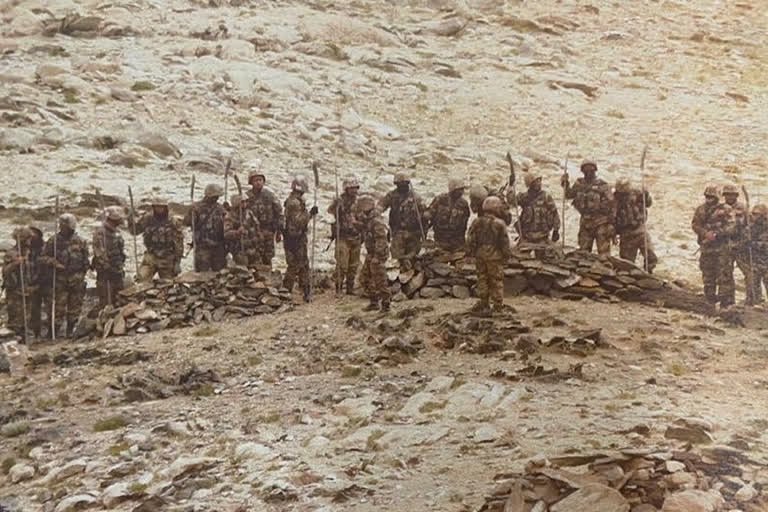New Delhi: The eleventh round of talks between senior commanders of the Indian Army and the Chinese People’s Liberation Army (PLA) on Friday on the Indian side of the Line of Actual Control (LAC) at Chushul resulted in a damp squib despite the talks extending to about 13 hours.
While an official statement by the foreign affairs and defence ministry held out the narration, it belied expectations of certain ‘gains’ especially after the completion of the disengagement process at two face-off points on the north and south banks of the Pangong Tso in eastern Ladakh.
According to sources in the security establishment, there was not much of forward movement in Friday’s talks and no gains could be built on the Pangong Tso disengagement.
The points of discussion related to disengagement in Gogra, Hot Springs and Demchok where there was no headway made in Friday’s talks.
From the Indian perspective, the talks have highlighted that there exists a discrepancy with the lack of representation of ground-level dynamics in the China Study Group (CSG).
Read: Cyber-threat from China looming large: CDS Bipin Rawat
The high-level CSG is headed by the National Security Advisor with the cabinet secretary, home secretary, foreign secretary, defence secretary, vice-chiefs of the Army, Navy and IAF, and the chiefs of the Intelligence Bureau (IB) and Research and Analysis Wing (RAW) as members.
It is only after the agenda is cleared that the military takes over at the ground level to negotiate and take stock of what has been executed.
The Indian delegation was led by Leh-based 14 Corps commander Lieutenant General PGK Menon, Navin Srivastava, joint secretary in the foreign ministry, a Brigadier ranked officer from the DGMO, besides local military representatives including the Indo-Tibetan Border Police (ITBP) which is mandated with guarding the India-China border from Ladakh to Arunachal Pradesh. ITBP teams operate jointly with the Army.
Also Read: 'Completion of disengagement to pave way for de-escalation of forces'
The Chinese delegation was led by Major General Lin Liu, commander of South Xinjian Military District.
Friday’s meeting on April 9 succeeded ten earlier rounds on June 6, June 22, June 30, July 14, August 2, September 21, October 12, November 6, January 24 and February 20.
Disengagement at the outstanding faceoff points would lead to de-escalation for the Indian and Chinese militaries that have deployed about 1,00,000 troops on both sides of the LAC in an unprecedented level of escalation in the eastern Ladakh region.
The ongoing tension was sparked off by a border skirmish on May 4-5, 2020 on the northern bank of the Pangong Tso near the LAC that snowballed into the massive militarization effort.
The talks process where progress has been stalled has also highlighted the fact that a robust resolution of the border issue would need escalation to top political leadership of the two countries due to perceptional difference in the nature of understanding where the border is demarcated.
Added to the border demarcation complexity is the Chinese demand to restore territories on the basis of a 1959 claim line, a line that was first proposed by former Chinese PM Chou el-Lai and was turned down by his Indian counterpart Jawaharlal Nehru.
Also Read: India, China agree to maintain stability on ground


